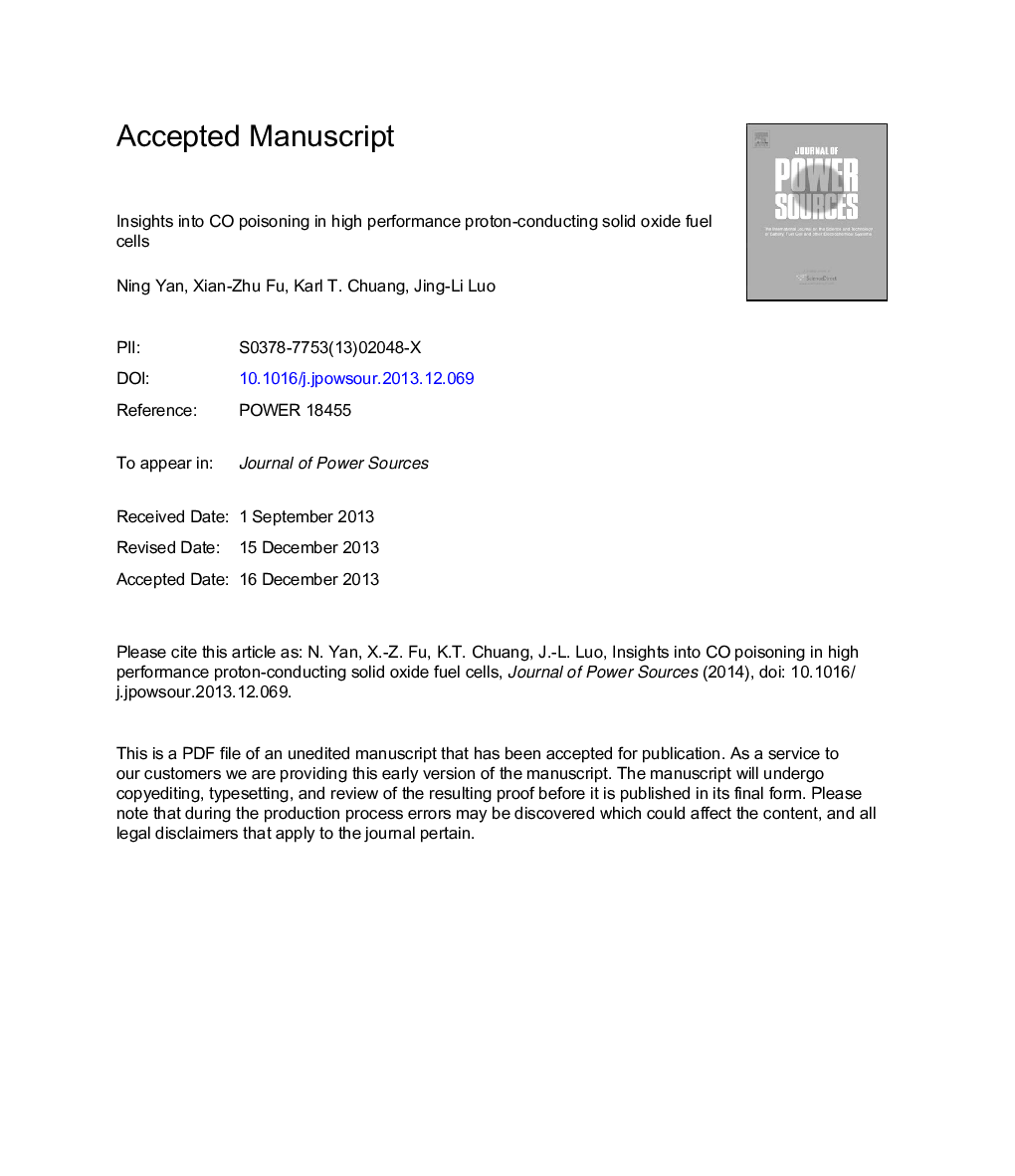| Article ID | Journal | Published Year | Pages | File Type |
|---|---|---|---|---|
| 7737270 | Journal of Power Sources | 2014 | 28 Pages |
Abstract
High performance anode supported proton-conducting solid oxide fuel cells (PC-SOFC) were fabricated and their performance in syngas was studied. PC-SOFC button cells produced a maximum power density of 812 mW cmâ2 in H2 at 750 °C. It was found that the CO-containing feed streams could drastically degrade the performance of PC-SOFC. Based on the experimental results and the theoretical analysis, the detailed process of the CO-induced Ni catalyst deactivation was identified. This process could be divided into three distinguishable stages during the continuous exposure of the Ni catalyst in the CO-containing environment. The first stage could be described using the CO surface active site blocking mechanism, which was further confirmed by CO/H2 competitive adsorption model. The second stage deactivation was proposed to be related to the carbon deposition at TPB (Triple-phase Boundary). The deactivation during this stage was accelerated by the electrochemical conversion of H2. The last stage was attributed to the coking of Ni catalyst and the resulted metal dusting effect.
Related Topics
Physical Sciences and Engineering
Chemistry
Electrochemistry
Authors
Ning Yan, Xian-Zhu Fu, Karl T. Chuang, Jing-Li Luo,
